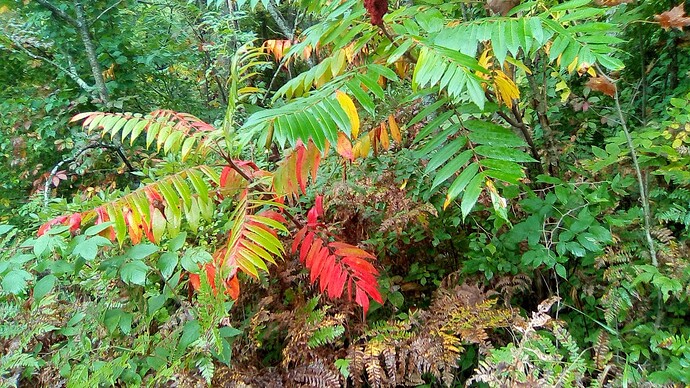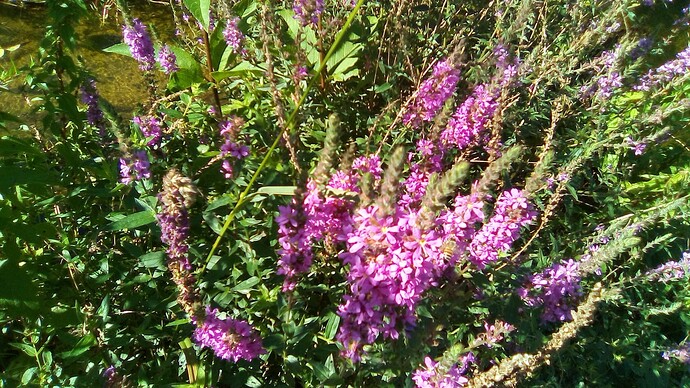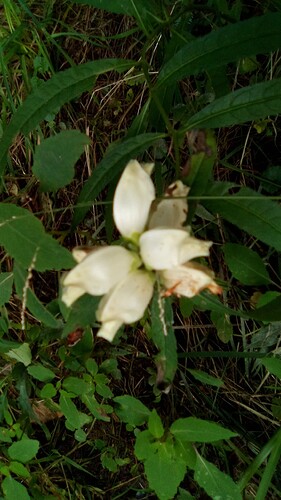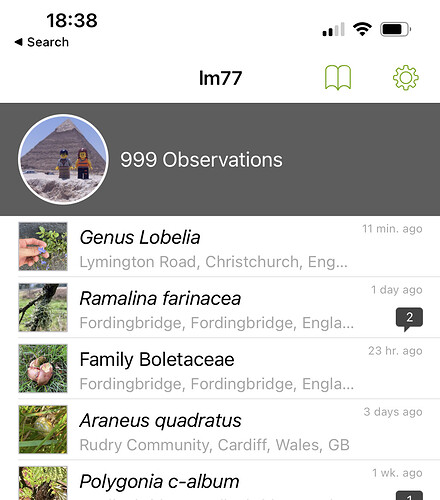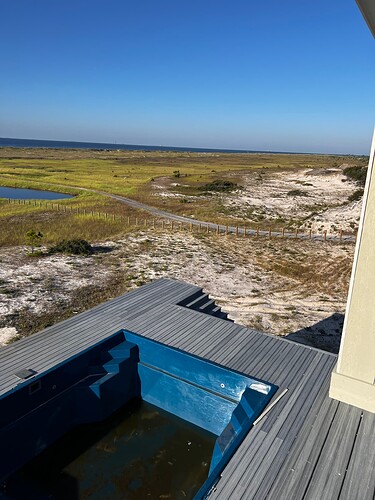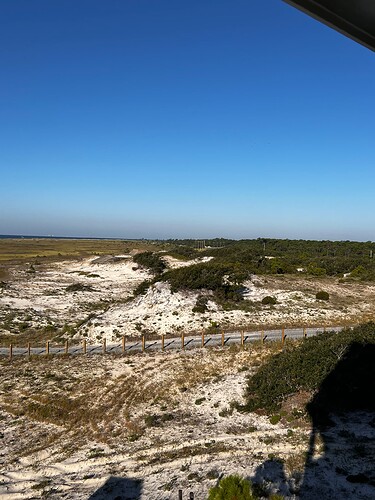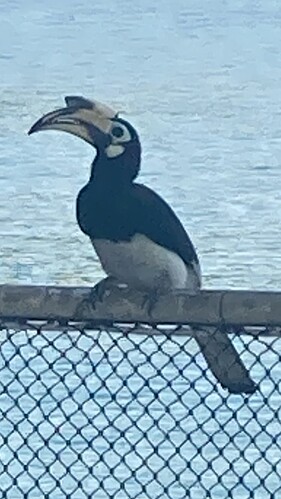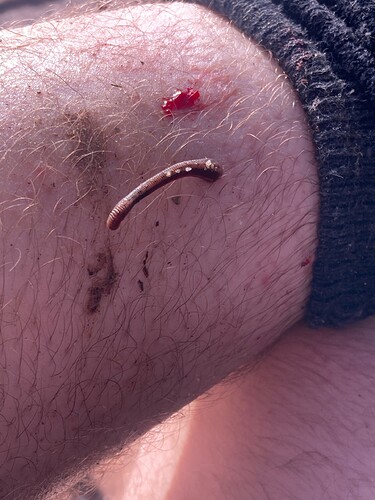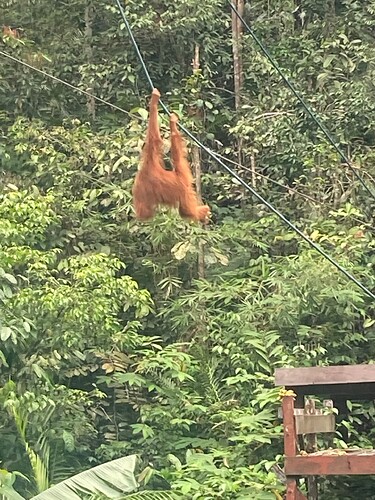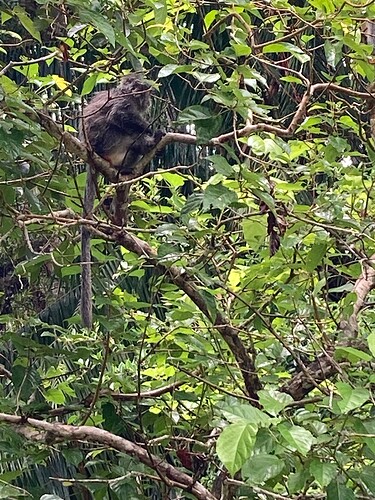One benefit is that the dodder is at least native. The honeysuckle, is probably the Japanese honey suckle, and it’s invasive.
The stuff from Arkansas was very invasive. White, fragrant flowers on a vine that went everywhere. It’s increcible when it blooms.
We also have a different kind of invasive honeysuckle. But it’s bushy, pinkish flowers and no pretty smell. : ( It just crowds stuff out and hogs up space, sun and other resources.
The variety of Dodder we had in West Texas was orange, and was delicate and intertwined the low weeds and grasses. It was called “love vine” by my parents, and the folk lore was that if you picked a strand and cast it up in the ever present wind, it would land pointed toward your future spouse. Not sure how you figured which end was the pointer.
I’ve heard that as well. We have several species in my county. I can’t tell them apart. But I’ve also have never tried lol.
It’s like with goldenrods. I just need to know the genus and not which of the dozen or so almost identical species it is. Perhaps one day.
I had no idea there were different species that looked alike. We were just noticing that this year has been a good one for goldenrod, though, by the way. They have been beautiful!
This is a few just in Chicago.
There are around 122 species of goldenrods in
USA. There is a general consensus that on field botany goldenrods are one of the harder groups to learn and even once you learn it, it typically requires close up examination to learn ID.
http://iowaplants.com/flora/family/Asteraceae/solidago/Solidago_spp.html
Some species are separated from each other by the types of hair on the seeds leaf width that almost requires a magnifying lens.
Wow! I had no idea. Thanks! I enjoyed botany in undergrad.
@Randy, I’ve never heard of ghostweek or turtle head before (or seen them). It’s interesting to see how different some of the flora are between our areas, even though we’re probably within 100 miles of each other.
@SkovandOfMitaze that’s interesting about goldenrod. I have wondered, if there were different species, because of some variations of color that I”ve noticed. But that may be a function of other things, the progression of any individual plant’s seed development, for example.
I did take some time the other week to look for inforation about a few tress and flowers on our property. One that I looked for and found (voila!) was “lance leaf goldenrod.” Well that explained why it looks a lot like goldenrod but not. I ran out of time on the other plants.
I found that the Seek app really has helped me see plants I’ve never noticed before. I guess I misnamed the white plant–it’s ghost plant, or Indian pipe. It’s a plant that has lost its chlorophyll, but interacts with fungus and nearby plants to grow. I only noticed it in the last few years–in shady areas, in fall (or spring, too, I think). I see the turtlehead near a small brook in Branstrom Park in Fremont only, so far! I’ve learned from your postings, too. Thanks
Indian pipe | Description & Nutrition | Britannica
Cool! Thanks, Randy!
I recommend caution trusting the Seek app. I’ve tried it a few times, and found that it is a wiki type of thing, rather than something like a vetted reference tool. It identified a number of common Michigan plants on my property as exotic, rare African species that in no way, except leaf shape and plant posture, resembled what was live before me. It seemed, too to incorporate my photos into the listings that were wrong. Oi!
yes, you’re right! there’s a mushroom that they said was a common New Zealand one!  That was funny. Good for humility–I thought I had found a zebra!
That was funny. Good for humility–I thought I had found a zebra!
I also post to iNaturalist, which allows online people to identify the postings–and they comment, too.
I suspect that’s a bit closer to the reality. Thanks
I really like inaturalist. Especially when you find someone who specializes in particular plants. You can follow that person and see on the map all the plants they cited. Usually it’s within 20 feet of the plant unless they obscure it. So if there is someone who focuses on oaks, beeches and so on in your area, I can look them up and see all the oaks they marked and if they marked like 15 oaks in one area, I know I can take my oak book to that area and find lots of them and go to the exact same tree they marked and study it.
I can also look up rare plants and see a general location, usually several miles , and if like 8 people marked it then I can contact them and though usually they won’t give out info to strangers they will give me a bit more specific info like “ walk along this trail and when it comes to this river walk along it headed east and you’ll find it within half a mile and ect…
Thanks …that is really cool. I did not know that. Believe @LM77 uses it too
I thought I was going to be off today but turns out I’m working. Got a call to help do some work on a house. I’ll probably be here again tomorrow as well. They’ve fired the guys that were here and it make sense. They did a terrible job. But me and another is fixing it up. But I always enjoy the view of the gulf and dunes and wetlands in between.
In the second pic, those concrete structures are leftovers of cannon block of a old fort that’s been out of use for well over a hundred years I believe. Look like
It was vacated around 1860s.
Yes, I got bitten by leeches
Great share, @MelekRimaye, we don’t get enough leech action in this thread if you ask me.
I think this may be the first!
Blech!

(The whiter shade of pale!)
